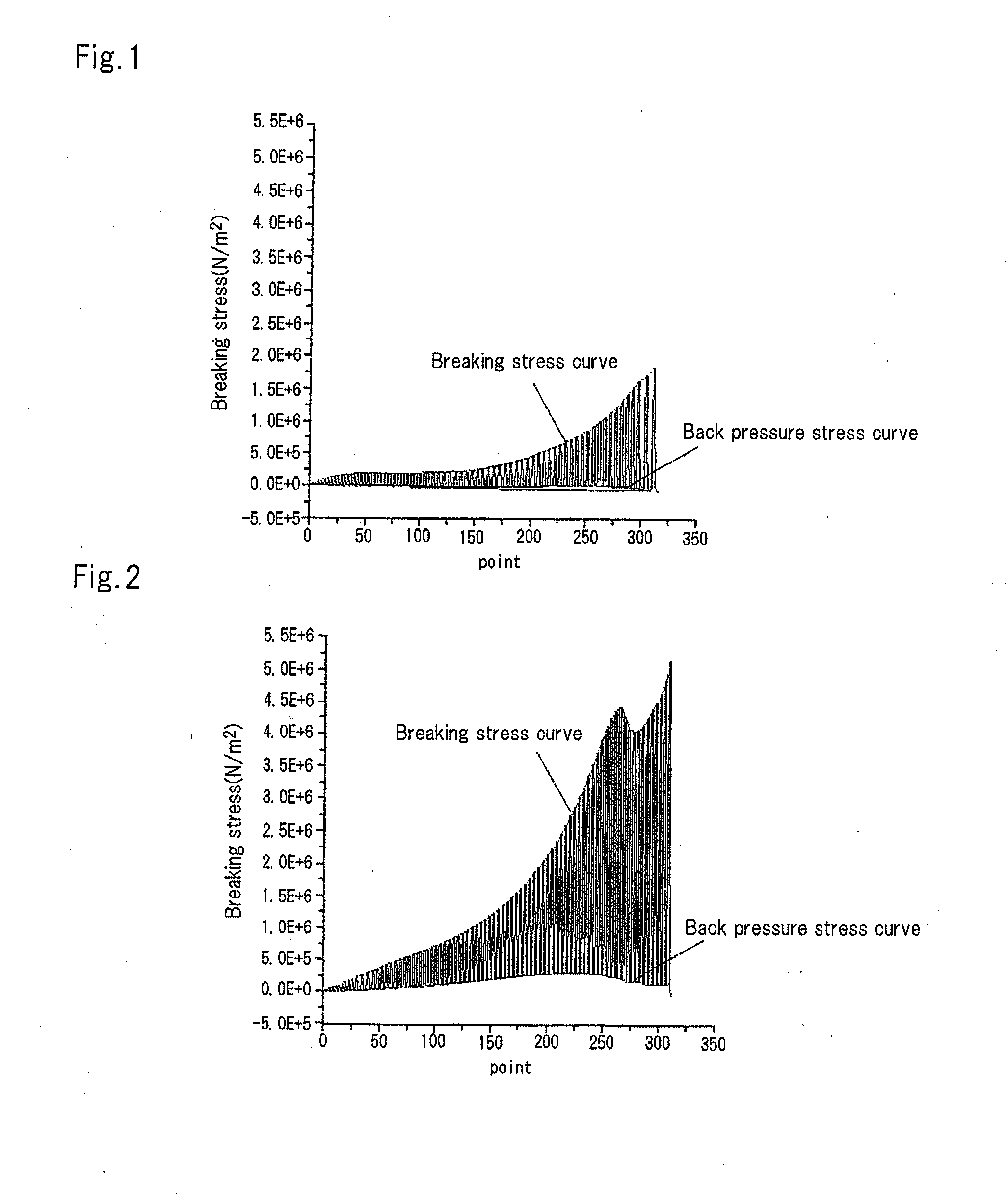Method of producing matured food
a technology of matured food and juiciness, which is applied in the field of producing a matured food, can solve the problems of changing the shape of food materials, affecting the taste of meat with much connective tissue protein, and juiciness of meat with little connective tissue protein, so as to achieve the effect of reducing elasticity, reducing elasticity, and adjusting the degree of softening
- Summary
- Abstract
- Description
- Claims
- Application Information
AI Technical Summary
Benefits of technology
Problems solved by technology
Method used
Image
Examples
example 1
[0046]A chunk of beef round from Australia was frozen in a freezer at −30° C. The meat completely frozen was partially thawed with using a microwave (National NE-SV30HA) and cut in a direction perpendicular to the long axis of its muscle fibers. With a cutting interval of 1.5 cm, a beef round steak with a maximum longitudinal width of 10 cm, a maximum horizontal width of 7 cm and a thickness of 1.5 cm was prepared. The prepared steak was completely thawed in the refrigerator. After the thawed beef round was immersed for 1 minute in an enzyme solution having a protease activity (Protease N “Amano” G, manufactured by Amano Enzyme, Inc.), which was adjusted to 0.5% by mass with using a phosphate buffer solution (pH 5.8), it was taken out and encased in a packaging container. The container was placed under reduced pressure at 0.01 MPa and hold for 1 minute with the food material expanded. Thereafter, the condition under reduced pressure was awaked, and the degree of vacuum was again inc...
example 2
[0050]A chicken breast fillet was frozen in a freezer at −30° C. The completely frozen chicken breast fillet was partially thawed in the refrigerator and cut in the direction perpendicular to the long axis of its muscle fibers. With a cutting interval of 1.0 cm, a chicken breast slice with a maximum longitudinal length of 5 cm, a maximum horizontal length of 1.5 cm and a thickness of 1.0 cm was prepared. The prepared chicken breast fillet was completely thawed in the refrigerator. After the thawed chicken breast fillet was immersed for 5 minutes in an enzyme solution having a protease activity (Bromelain F, manufactured by Amano Enzyme, Inc.), which was adjusted to 0.5% by mass with using a phosphate buffer solution (pH 5.8). It was taken out and encased in a packaging container. The container was placed under reduced pressured at 0.01 MPa and hold for 5 minutes with the food material expanded. Thereafter, the condition under the reduced pressure was awaked, and the degree of vacuum...
example 3
[0054]A Japanese flying squid was frozen in a freezer at −30° C. The squid completely frozen was partially thawed with using a microwave (National NE-SV30HA) and cut in a longitudinal direction perpendicular to the long axis of the muscle fiber. With a cutting interval of 0.5 cm, a squid fillet with a maximum longitudinal length of 10 cm, a maximum horizontal length of 0.5 cm and a thickness of 0.5 cm was prepared. The prepared squid fillet was completely thawed in the refrigerator. After the thawed squid fillet was immersed for 1 minute in an enzyme solution having a protease activity (Papain W-40, manufactured by Amano Enzyme, Inc.), which was adjusted to 0.5% by mass with using a phosphate buffer solution (pH 5.8), it was taken out and encased in a packaging container. The container was placed under reduced pressure at 0.01 MPa and hold for 1 minute with the food material expanded. Thereafter, the condition under reduced pressure was awaked, and the degree of vacuum was again inc...
PUM
| Property | Measurement | Unit |
|---|---|---|
| Pressure | aaaaa | aaaaa |
| Temperature | aaaaa | aaaaa |
| Pressure | aaaaa | aaaaa |
Abstract
Description
Claims
Application Information
 Login to View More
Login to View More - R&D
- Intellectual Property
- Life Sciences
- Materials
- Tech Scout
- Unparalleled Data Quality
- Higher Quality Content
- 60% Fewer Hallucinations
Browse by: Latest US Patents, China's latest patents, Technical Efficacy Thesaurus, Application Domain, Technology Topic, Popular Technical Reports.
© 2025 PatSnap. All rights reserved.Legal|Privacy policy|Modern Slavery Act Transparency Statement|Sitemap|About US| Contact US: help@patsnap.com

